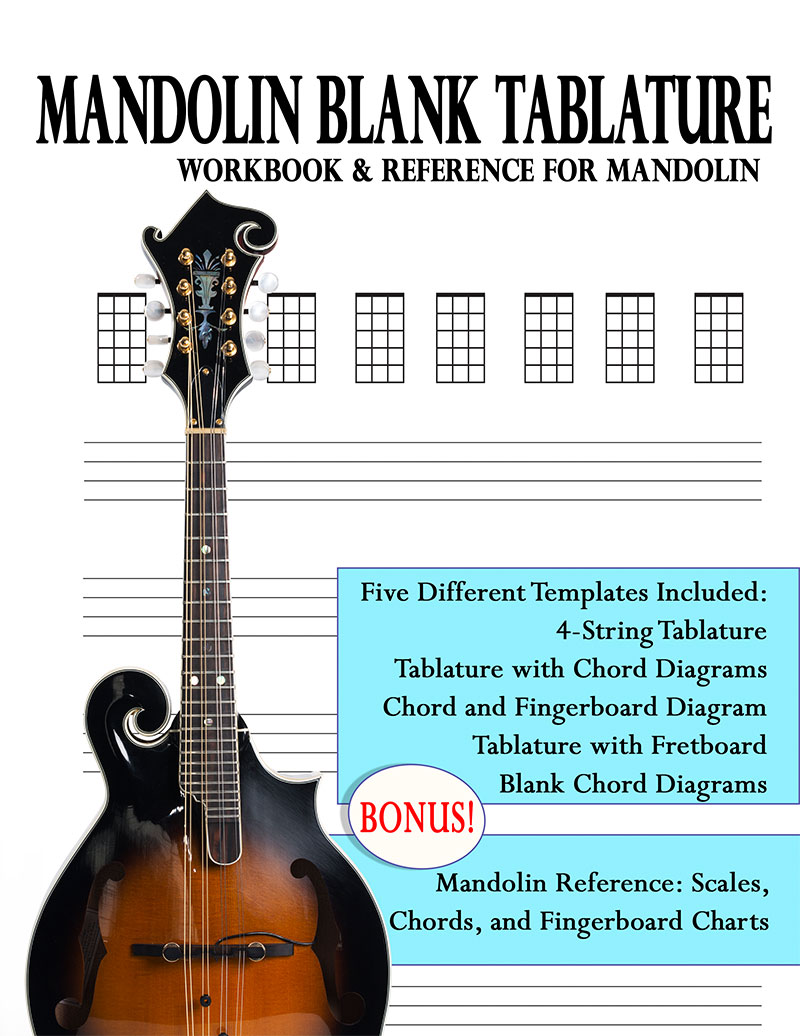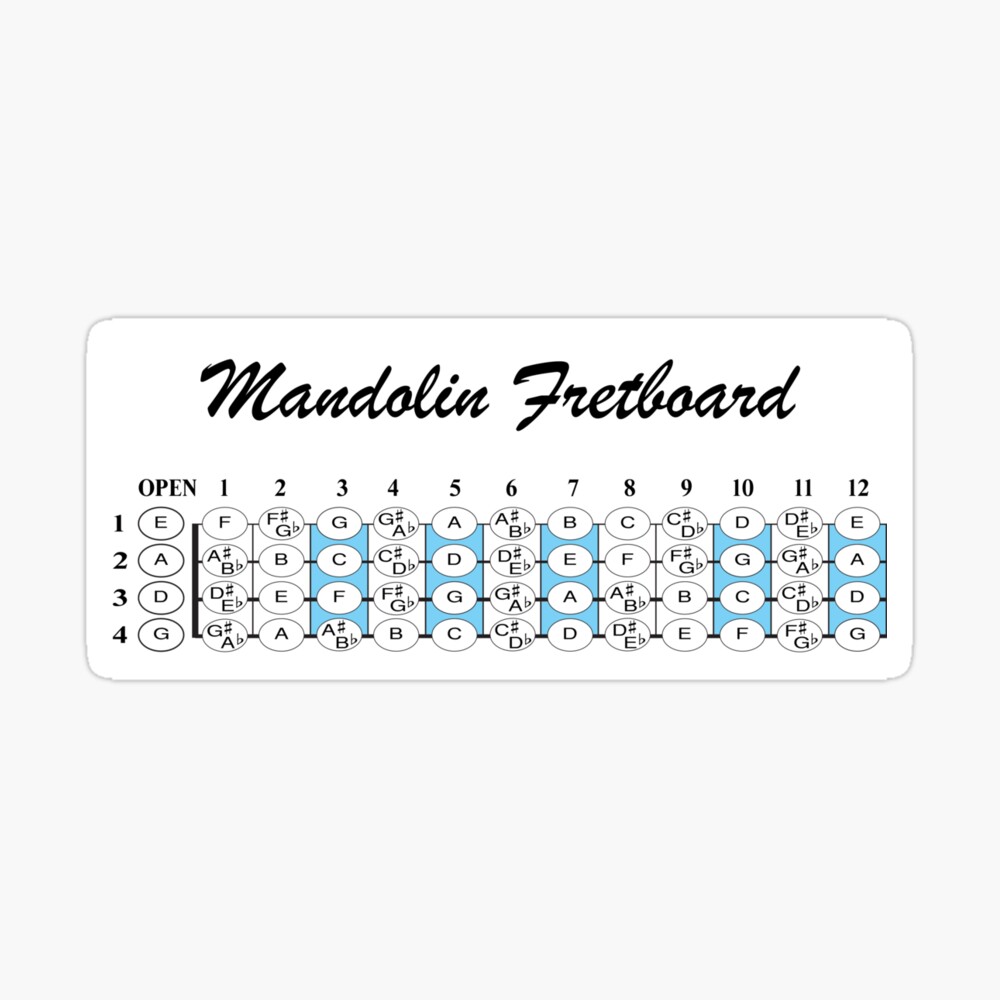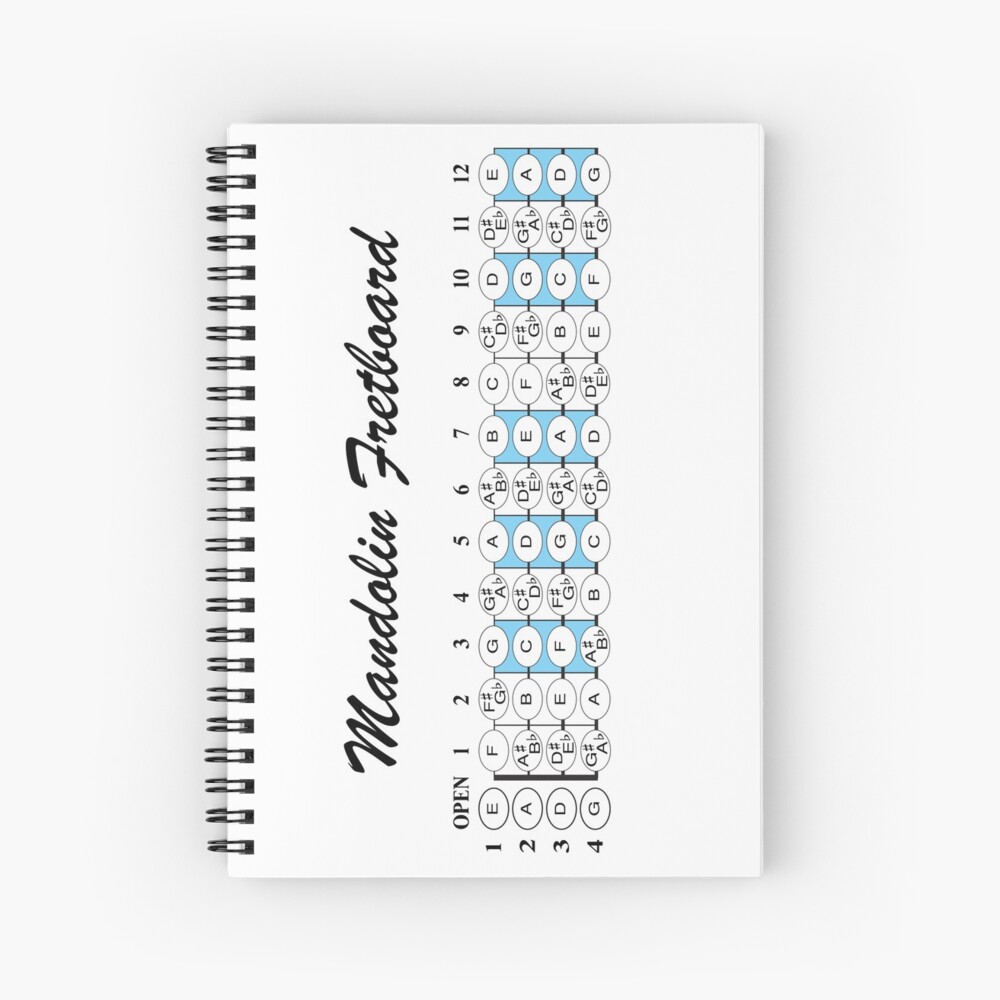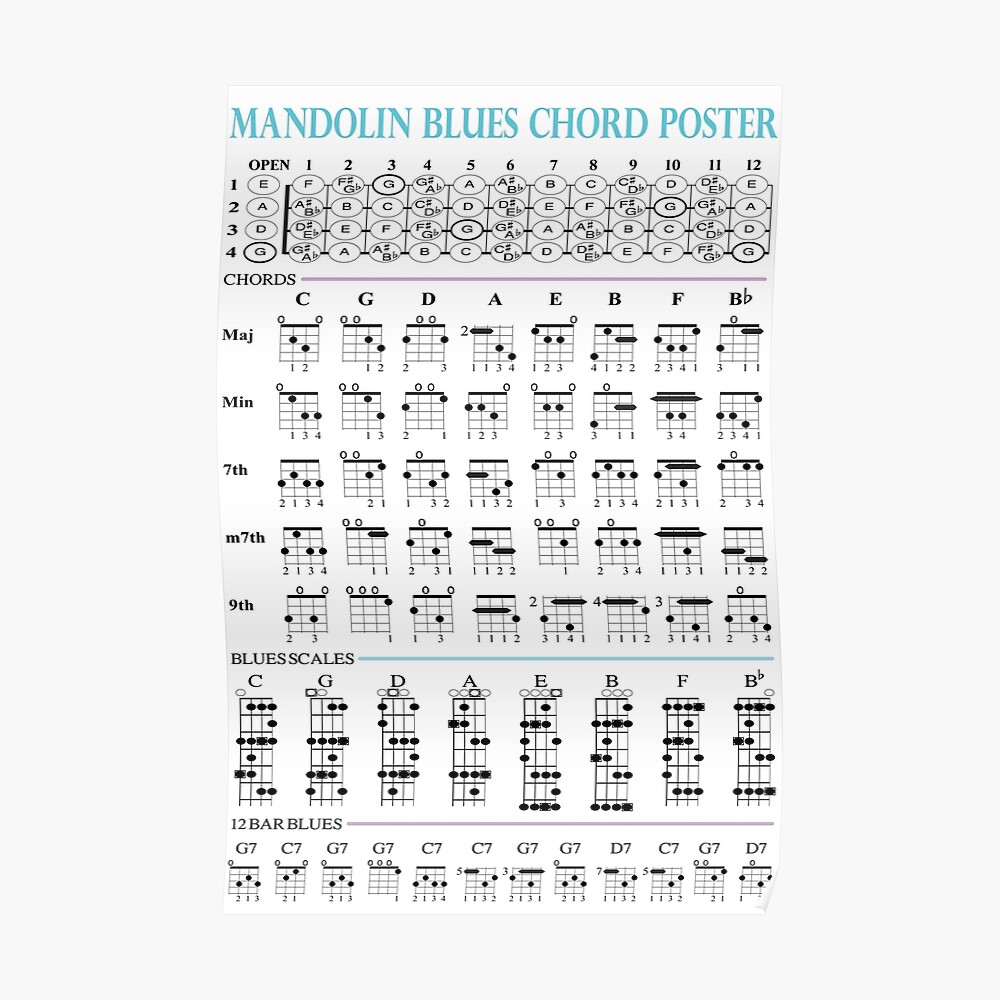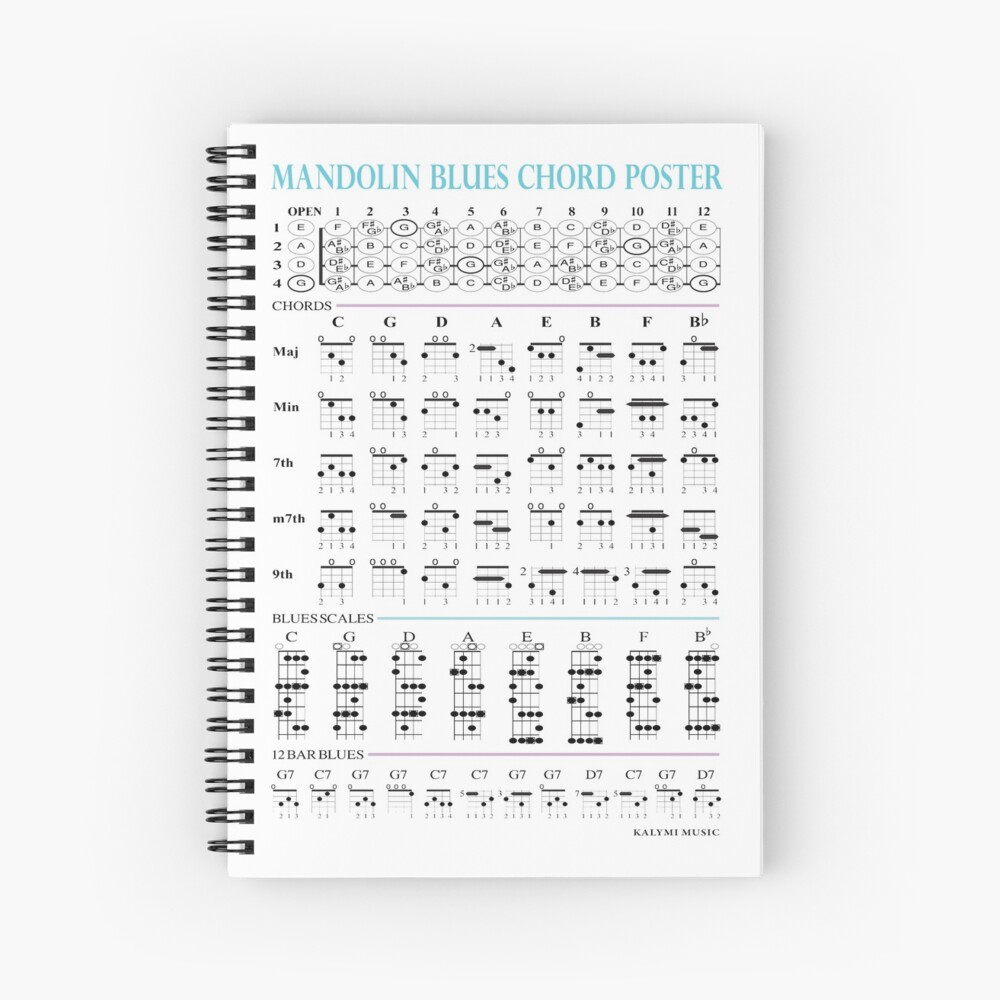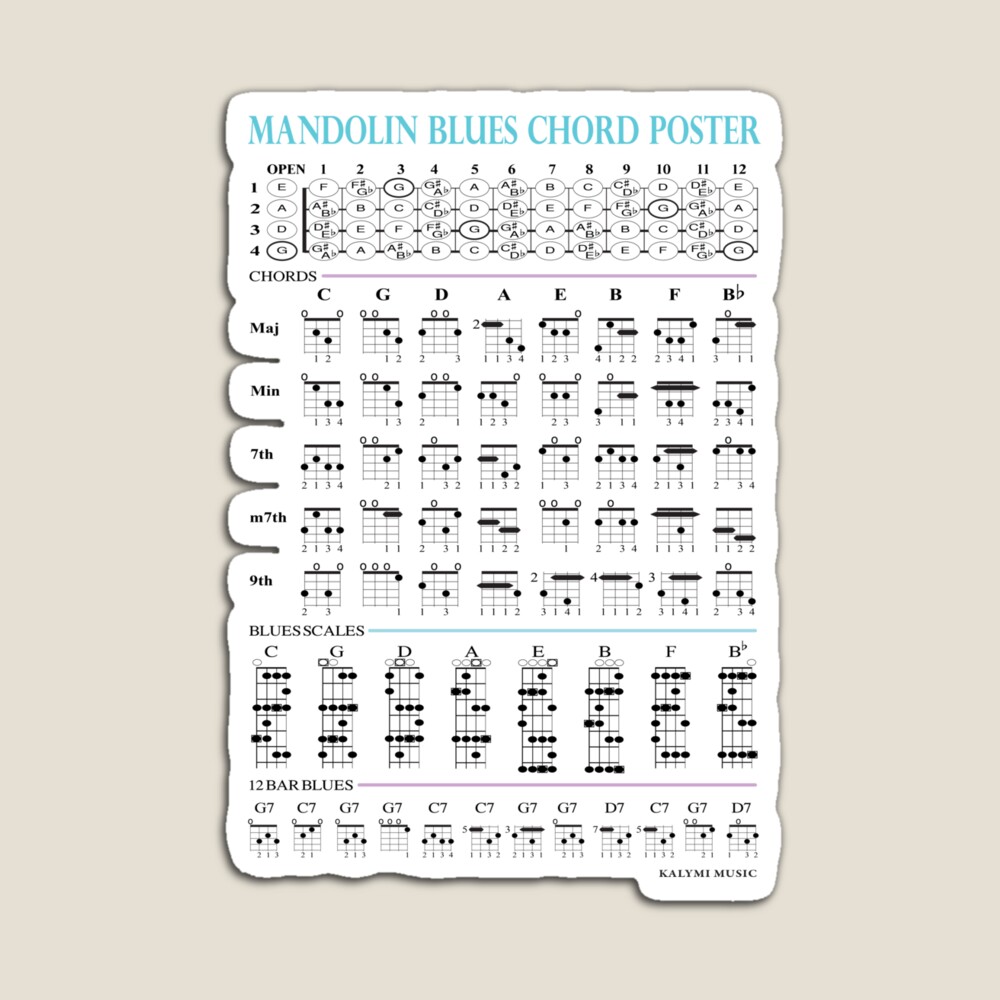In today’s blues mandolin lesson, we will create a 4-riff blues solo over a 12 bar blues progression in the key of G by using a few of the G scales below. We will repeat and transpose the riffs to match the chords in the standard 12 bar blues progression. If you are just starting out on blues mandolin check out the intro to blues mandolin post.
To start, look at or watch the 12 bar blues chord progression in the key of G with the mandolin chords below:

The G Blues Scale on Mandolin
Now let’s look at the blues minor scale in the key of G. Notice the notes of the blues minor scale have a b3, b5 and b7.

Two Practice Tips
1) Try to get that scale firmly in your fingers by playing them ascending and descending. I like to go through a series of rhythms playing each note twice with an eighth note rhythm, three times as a triplet and each note four times as sixteenth notes.
2) Practice the blues scale with a metronome, so you subdivide the notes equally or tap your foot (or just count in your head). It’s a good idea to play the notes with a straight rhythm (even up and down strokes) and a blues shuffle (long-short). Also, combine rhythms, play eight notes and then a triplet, for example.
Extending the Blues Scale
The blues scale is a fantastic one-scale solution to improvising blues and a great place to start, but we can add more notes for variety.
Below, you will see the major scale with the normal raised 7th on the F# (#7). The Mixolydian scale is almost identical, but the 7th degree is lowered or a b7. The blue scales, as previously mentioned, have a b3, b5 and b7 and no 6th degree compared to the major scale.
Now, suppose we combine the blues and mixolydian scale together. In that case, we will have the added b3 and b5 to the Mixolydian scale, giving us more notes to play with and outlining more chord tones.
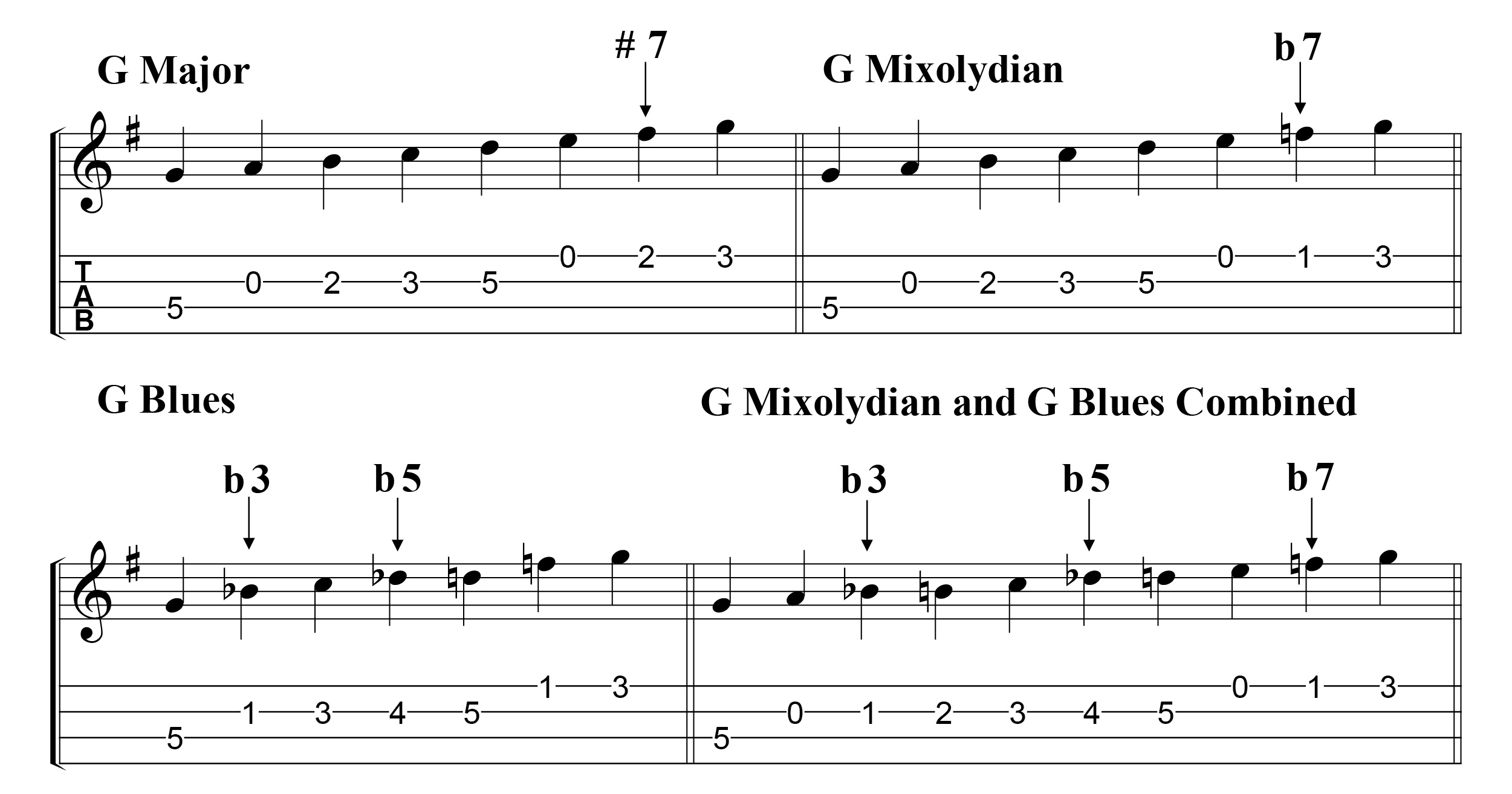
For more music theory tips check out this post: 10 music theory tips all musicians should know.
Creating Mandolin Blues Riffs
Let’s move on to creating our first short blues riff. I will take four riffs from my book “Mandolin Blues Book” to make our 12 bar blues solo. The first riff is 2 bars long and uses the G blues scale over the G7 chord in bar one, then does an ascending group of thirds over the C7 chord and adding in some tremolo:

The second riff (bars 3-4 above) moves up the neck to the higher Bb in the G blues scale with a triplet slide. Try playing the riff without the slides and pull off until you have the correct rhythm, then add in the slides and pull offs later.
Riff 3 and 4
The third riff (bars 5-6) outlines the C7 chord with a few blues notes added in and then the first riff is repeated in bars 7 and 8:

The fourth riff (bars 9-10) is a basic blues pattern transposed into D and then repeated with a variation on the C7 chord.
The last two bars set up a turnaround with the C7 and D7 chords to bring the solo back to the start:

Mandolin Riff Recap
Riff Recap
That’s pretty much it for the riffs. As you can see, there is a fair bit of repetition and some variations on the basic riffs. Repeating blues riffs is a standard way of extending a short riff to a full solo. Repeating also helps create a unified and cohesive experience for the listener. Are you ready to try the whole solo? Check out the mandolin tablature and audio in the full 12 bar mandolin blues solo in G below.
See my blog post for more tips on creating a flawless solo or simple improvisation tips for more blues improvising.
Blues Solo Review and Tips
Finally, let’s review how we created our little blues solo.
1) Create a short little melodic riff using the notes from the blues scale or extended scales.
Feel free to go outside the blues scale by adding extra notes, not in the blues scale. Particularly the 3rd of the chord. In a G chord, the 3rd is an B. Notice the B is not in the G minor blues scale. You can borrow from the G major scale or just target the 3rd of the chord you are soloing over.
2) Make at least 2 or 3 more riffs that compliment the first riff and use a few basic techniques like call and answer, transposition, or outlining chord tones. Notice all the riffs are quite different but, when added together, create enough interest by not being overly repetitive.
3) Transpose the riffs to fit the chords you are playing over.
Final Tips
And that’s it! Many students get freaked out when I ask them to do a solo but stay calm and keep these final three points in mind:
– At a minimum, learn and memorize the blues scale in the key you are improvising.
– Make a short, memorable 1 or 2 bar riff.
– Transpose the riff to fit the chords with repetition and a slight variation to keep it fresh.
Good luck jamming! Leave any comments or suggestions you have below.
Mandolin Blues Book
Take your blues mandolin playing to the next level with the Mandolin Blues Book. A collection of 101 blues riffs and solos ideal for all mandolinists looking to get a good grasp of jamming the blues. The book covers all the essential tools needed to play blues mandolin. Audio and video are available. 157 pages
Celtic World Collection – Mandolin
“Celtic World Collection – Mandolin” contains 46 of the most requested traditional tunes plus new original mandolin tunes with standard notation, chords and mandolin tablature. Mandolin recordings with guitar accompaniment below.
Mandolin Blank Tablature Workbook and Reference
The 4-String Blank Tablature Workbook and Reference for Mandolin includes five blank templates: blank tablature (tab) with chord diagrams, 4-string blank tab, blank tab and fingerboard chart, chord diagrams with fingerboard chart, and 4-string chord diagrams. A helpful reference with chords, scales, fingerboard charts for the mandolin also included.155pgs.
PDF ebook also available so you can print as many blank tab pages as you like. Add to cart for the PDF or buy from Amazon for the print book.





